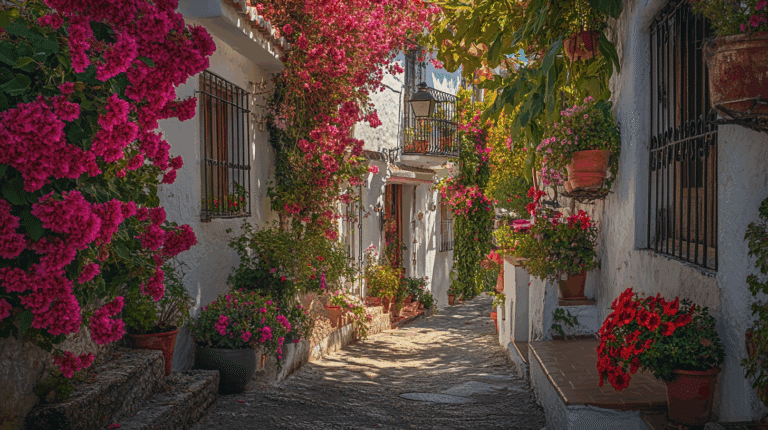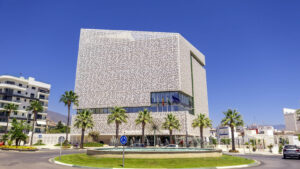Estepona’s Coastal Renaissance
Nestled along the sun-drenched shores of the Costa del Sol, Estepona has undergone a remarkable transformation in recent years. This once-sleepy fishing village has blossomed into a vibrant coastal gem, seamlessly blending its rich Andalusian heritage with modern urban development. Let’s embark on a journey through Estepona’s coastal renaissance, exploring how this charming town has evolved while preserving its authentic Spanish charm.
From Fishing Village to Coastal Jewel: Estepona’s Evolution
Estepona’s story is one of remarkable transformation. For centuries, it was known primarily as a modest fishing village, its economy revolving around the bounty of the Mediterranean Sea. However, the latter half of the 20th century saw the beginnings of change, as tourism began to flourish along the Costa del Sol.
Unlike some of its neighbors that rapidly developed into large-scale tourist destinations, Estepona took a more measured approach. The town’s leaders recognized the importance of preserving its unique character while embracing progress. This philosophy has been at the heart of Estepona’s coastal renaissance, resulting in a harmonious blend of old and new that continues to captivate visitors and residents alike.
Preserving the Past: Estepona’s Old Town
At the heart of Estepona’s transformation lies its beautifully preserved Old Town. Wandering through its narrow, flower-lined streets is like stepping back in time. Whitewashed houses adorned with colorful geraniums and bougainvillea create a picturesque scene that epitomizes the charm of Andalusian villages.
The town has invested significantly in restoring and maintaining its historical center. Plaza de las Flores, the main square, serves as a vibrant hub of activity, surrounded by traditional tapas bars and cafes. The nearby Church of Los Remedios, with its distinctive blue-tiled dome, stands as a testament to Estepona’s rich cultural heritage.
Embracing Modernity: Urban Development and Infrastructure
While preserving its historical core, Estepona has not shied away from modern development. The town has undergone significant urban renewal, with particular attention paid to enhancing public spaces and infrastructure.
One of the most notable examples of this Costa del Sol evolution is the Paseo Marítimo, Estepona’s seaside promenade. Stretching for kilometers along the coastline, this beautifully landscaped walkway has become a favorite spot for both locals and tourists. Dotted with palm trees, sculptures, and inviting benches, it offers stunning views of the Mediterranean and serves as a perfect backdrop for evening strolls.
The town has also invested in cultural facilities, such as the Felipe VI Auditorium, a modern venue hosting a variety of performances and events. This commitment to cultural development has played a crucial role in Estepona’s renaissance, attracting a diverse range of visitors and enhancing the quality of life for residents.
Green Initiatives: A Sustainable Approach to Development
Estepona’s transformation extends beyond buildings and infrastructure. The town has embraced a green philosophy, implementing numerous environmental initiatives. The creation of new parks and gardens, such as the Orchidarium, home to one of the largest collections of orchids in Europe, has earned Estepona the nickname “Garden of the Costa del Sol”.
This focus on green spaces not only enhances the town’s aesthetic appeal but also contributes to a more sustainable urban environment. Estepona’s commitment to eco-friendly practices is a key component of its coastal renaissance, setting an example for sustainable development in the region.
Culinary Evolution: A Gastronomic Journey
No discussion of Estepona’s transformation would be complete without mentioning its culinary scene. While traditional Andalusian cuisine remains at the heart of the town’s gastronomy, Estepona has embraced culinary innovation, resulting in a diverse and exciting food landscape.
From traditional tapas bars to modern fusion restaurants, Estepona offers a gastronomic journey that reflects its evolution. Seafood naturally plays a starring role, with local catches featured prominently on menus across town. However, innovative chefs are also incorporating international influences, creating a unique culinary identity that bridges tradition and modernity.
The Art of Transformation: Estepona’s Cultural Renaissance
Art has played a significant role in Estepona’s renaissance. The town has embraced street art as a means of urban regeneration, with the “Ruta de Murales Artísticos” (Route of Artistic Murals) transforming building facades into canvases for local and international artists.
This initiative has not only beautified the town but has also created a unique open-air gallery that attracts art enthusiasts from around the world. The murals often depict scenes from Estepona’s history and culture, serving as a visual narrative of the town’s transformation.
Looking to the Future: Sustainable Growth and Tourism
As Estepona continues its coastal renaissance, the focus remains on sustainable growth. The town is committed to balancing development with environmental conservation, recognizing that its natural beauty is one of its greatest assets.
Tourism continues to play a vital role in Estepona’s economy, but the approach has evolved. Rather than mass tourism, the town is focusing on attracting visitors who appreciate its unique blend of tradition and modernity. Boutique hotels, eco-friendly accommodations, and experiential tourism offerings are becoming increasingly prominent.
This strategic approach to tourism development ensures that Estepona can continue to grow and evolve while maintaining its distinctive character and charm.
Conclusion: A Model of Coastal Transformation
Estepona’s coastal renaissance offers a compelling model for how coastal towns can evolve in the 21st century. By carefully balancing preservation and progress, Estepona has transformed itself into a vibrant, modern destination while retaining its authentic Andalusian spirit.
From its beautifully preserved Old Town to its innovative cultural initiatives and sustainable development practices, Estepona exemplifies the potential for thoughtful urban evolution. As it continues to grow and change, Estepona remains true to its roots, offering visitors and residents alike a unique blend of tradition and modernity on the sun-soaked shores of the Costa del Sol.
Whether you’re drawn by its rich history, its beautiful beaches, its culinary delights, or its commitment to sustainable living, Estepona’s coastal renaissance has something to offer everyone. It stands as a testament to the power of visionary urban planning and community spirit, and a shining example of how coastal towns can thrive in the modern era while honoring their past.







